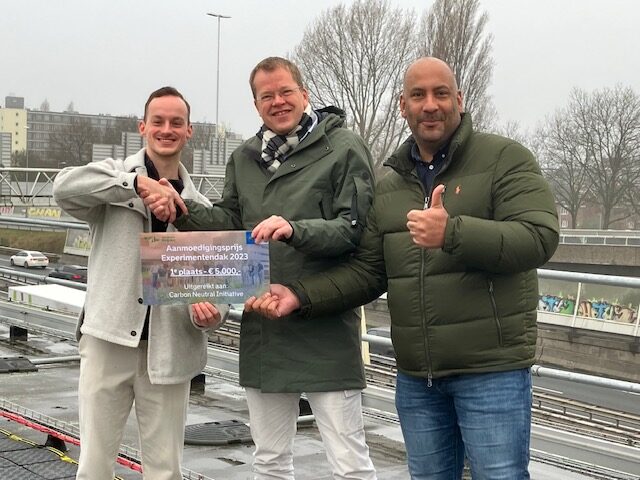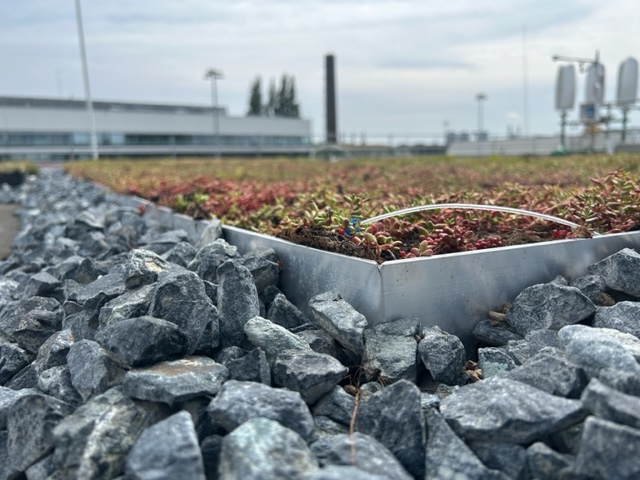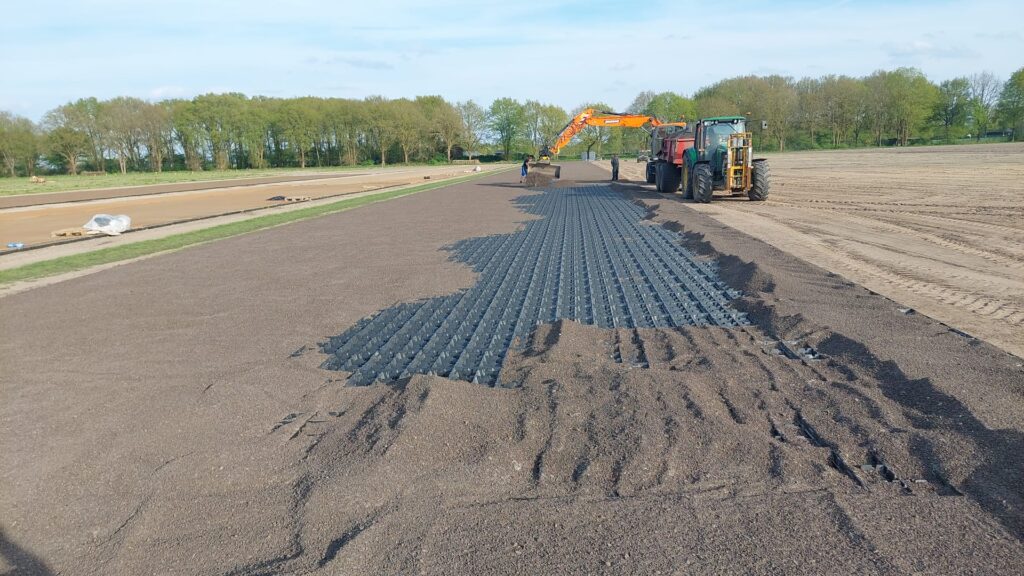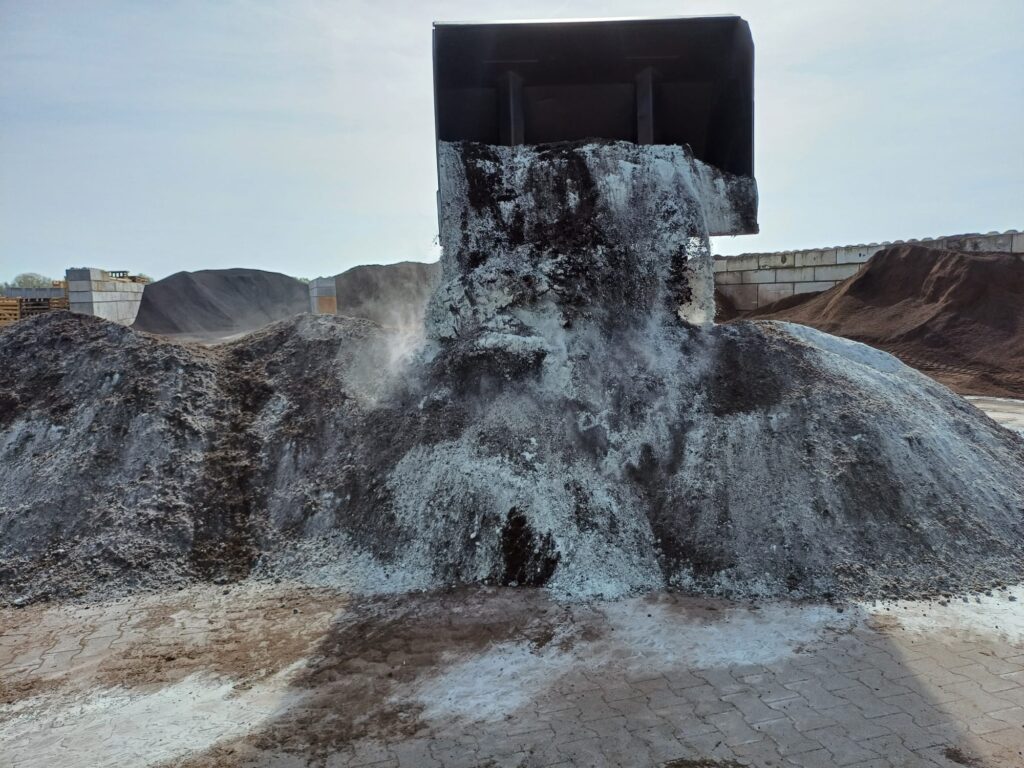Unlocking Urban Rooftops for Carbon Capture in the Netherlands
An award winning organization in the Netherlands is on a mission to “green roofs” by using a composition of soil which reacts with the CO2 in the air, breaking it down and removing it permanently.
Carbon Neutral Initiative (CNI) introduced the Carbon Green Roof project to contribute to global climate goals of removing 10 Gigatonnes of CO2 from the atmosphere by 2030, and is a small part of their overarching plan to become the first bio-enhanced silicate weathering project in Europe.
Liam A. Bullock, a geochemist and geological consultant working on CO2 removal projects, has been piloting the scheme over the past year and has seen great success.
“Not only is (the Carbon Green Roof project) novel within the green roof sector, but also the carbon removal sector,” Bullock said. “[They] tend to focus on rural and agricultural methods of enhanced weathering, which leaves the vast urban areas as essentially un-utilized spaces.”
Although the Carbon Green Roof project is being trialed in the Netherlands, Bullock noted that “it is important now for us to raise the profile of these as it is a new and novel product.”
While the product is in its infancy, CNI hopes the project will gain traction in the next couple of years and make green roof projects accessible to countries in the European Union where Sustainable Development Goals are being introduced at local and national levels.
When asked about his hopes for the future and the project, Bullock said, “(CNI is) looking to establish our CO2-removing green roof in the Netherlands, as well as expanding across Belgium and Germany.”
The group anticipates achieving the majority of the weathering potential within two decades, and hopes that the green roofs will last for several decades, neatly complementing the weathering process, which according to CNI estimates, occurs over 30 to 50 years.
Promoting the use of green rooftops, even without applying rock dust, improves urban biodiversity, provides additional energy savings through thermal insulation, retains more water, offers natural soundproofing, increases the lifespan of the underlying roof, and adds an aesthetic flair to climate action. Adding rock dust to the mix enhances carbon removal through reactions with atmospheric CO2 and rainwater, complimenting the carbon absorption already occurring by the plants present.
Maintenance of the roof space is minimal, apart from periodic sampling to verify CO2 removal rates. There are few downsides to installing a green roof, aside from the extra support for the roof to take the additional weight, costs incurred from adding rock dust to the cassettes, and the monitoring process. Furthermore, life cycle analyses conducted by CNI revealed that CO2 emitted during the manufacturing and maintenance of the rooftops accounts for only 3.3% of the potential CO2 removed by each green roof, demonstrating a significant net positive impact on the environment.

CNI’s success with the Carbon Green Roof project landed them the top prize for the Experiments Encouragement Award in Rotterdam in 2023. The project, named LIFE@Urban Roofs, was formed as part of the broader L’Instrument Financier pour l’Environnement (LIFE) programme. CNI hopes to continue their projects across the rest of Europe contributing to the Paris Agreement framework for Carbon Neutrality and Net Zero Targets 2030/2050.
CNI collaborates with other groups around Europe, including the Netherlands Organisation for Applied Scientific Research (TNO), as well as research teams from Utrecht University in the Netherlands, Hasselt University in Belgium, and Salamanca University and Alicante University in Spain, according to Bullock.
The Carbon Green Roof project leverages Enhanced Rock Weathering (ERW), a method that replicates the natural weathering process. Natural weathering occurs when rock is exposed to rainwater that contains dissolved CO2 from the atmosphere. The dissolved CO2 forms carbonic acid, which dissolves minerals in the rock and releases elements like calcium and magnesium. Moreover, increased soil CO2 levels and the presence of microbes hasten the reactions. Rather than millions of years, it takes a few years to achieve the same end effect as weathering, which breaks down the minerals with the aid of soil and microbial processes. This approach produces the same stable bicarbonate as a result of the CO2 removed.
CNI utilizes silicate rock sourced from quarries. From there, the rock is ground into a fine powder with flour-like consistency before being added to a soil substrate composed of an amalgamation of biomass and various rocks.
The substrate is grown at their nursery in Alphen, Netherlands using coconut husks and bark, green compost, perlite, pumice sand, lava rock, and wollastonite feedstock, all crushed to a coarser grain size measured on the millimeter-scale. Smaller grains are desirable as they have larger surface areas, encouraging faster reactions and better drainage of the soil.
The soil cassettes are prefabricated in large nurseries in the Netherlands and Belgium and transported to sites for installation. The soil cassettes’ versatility allow for easy installation on any flat surface – from spaces as small as bus stops to enormous commercial buildings, schools, libraries or governmental buildings – so long as the underlying structure has a load capacity of at least 80 kilograms per square meter.
Introducing green rooftops into built environments increases urban biodiversity in addition to bringing added climate benefits. A 2012 study published by researchers at Arizona State University estimates that urban land conversion will grow 185% by 2030. At the current rate of urban expansion, researchers expect up to a 40% reduction in the number of species in biodiversity hot spots globally. Transforming urban environments into green spaces using technologies such as green rooftops provides habitats to a range of fauna that otherwise would not be found in urban settings and offsets the loss of vegetation biodiversity. At the same time, it will improve storm water retention, increase building energy efficiency, and create cooler micro-climates to offset the urban heat island effect.
The practicality and versatility of the technology underpinning the Carbon Green Roof project encourages local authorities and owners of private property to adopt this technology, opening up urban environments to the possibility of transforming cities and towns into CO2 sinks, greatly adding to the land available for carbon capture.
The project has multiple funding sources and CNI is taking advantage of the well-established green roof market. The costs of production and installation do not rely on carbon credits to pay for their operations. CNI is also seeking funding from the soil improvement market as a secondary source of financing for the Carbon Green Roof project.
“We are not directly dependent on carbon credits for bringing rock dust to market as a soil improver,” Bullock noted. Rock dust has inherent benefits for enhancing soil quality and can be used as a soil supplement in place of traditional chemical amendments. Carbon credits would be necessary for large-scale CO2 removal through improved weathering because they help pay for the massive quantities of rock dust required to meet future CO2 sequestration targets.
No project is without risk, and when asked, Bullock stated that assurance of green rooftop integrity and liberation of trace elements from weathered rock is something that is being closely monitored. To proactively address risk, CNI periodically tests to verify the condition of the green rooftop. The key to addressing risk is to apply appropriate rock compositions, rock grain sizes and application rates, deciphered through characterization and modeling approaches to estimate elemental release.
Green roof projects offer an exciting opportunity to expand carbon removal efforts into urban areas.
Emma Pattinson is a first-year master student in Environmental Protection and has a BSc in Environmental Management (Sligo, Ireland) as well as a BA in History (York, UK). Having worked for 20 years in the public and private education sector, she has experience of a multitude of business environments, such as defense, medicine, logistics and manufacturing. Dedicated to environmental causes, Emma is looking forward to working together with like-minded people to bring about positive change and continue to educate. When she is not studying, she spends her time as a youth rugby trainer, taxi for her children and mother of dogs.
Support us on Patreon
Thank you for joining us today! Please become a member of RTE and support us on Patreon. Unlike many larger organizations, we work with a team of determined and passionate volunteers to get our message out. We aim to continue to increase the awareness of remineralization to initiate projects across the globe that remineralize soils, grow nutrient dense food, regenerate our forests’ and stabilize the climate – with your help! If you can, please support us on a monthly basis from just $2, rest assured that you are making a big impact every single month in support of our mission. Thank you!











Klaus Kunz
February 13, 2025 (3:52 am)
I am consulting companies in US, EU and India on sustainable business transformation and I am very interested in “Carbon credits from roof greening”. Who is certifying your credits? Would it be possible to connect? I have a client with a potentially direct link to the topic. My mobile number is +49 160 1229937. Best regards, Klaus
Joanna Campe
February 13, 2025 (10:17 am)
We are a non profit organization not seeking carbon credits for roof greening. You may want to get in touch directly with the company in the above article.